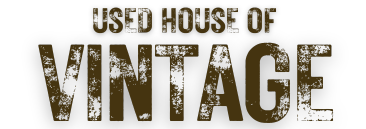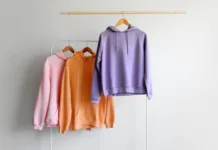Last Updated on February 26, 2025 by Used House Of Vintage
Don’t you love headbands! Just a headband can do the addition of ideal fine details to any hairdo. So, highlighting some ways on the most proficient method to make headbands. They inspire you to try various new hairstyles because it is possible with this beautiful accessory.
What do you need to know about making headbands at home?
Pick a lace or ribbon.
Shops or stores dealing with craft supplies are stacked with charming and adorable laces and ribbons. For this, it is ideal for picking a lace or fabric that is soft and manageable, estimating about 1″ wide or less. Basically, the elastic you choose should have a width similar to that of the ribbon.
Assuming you pick strips with embellishments like dots and sequins, ensure that they are just on one side of the lace. So it will not get stuck in your hair.
Whenever the situation allows, pick a lace that contains a touch of elasticity in the texture to make wearing it much easier. Pull the lace or strip to check if it stretches properly. Suppose it does; it means that it contains some elasticity. However, you can always use non-stretchable material or fabric as well without any issues.
Get some elastic-
Most texture and fabric stores offer spools of versatile elastics in various tones and widths. You will need to find one that is more slender than the strip you have picked for your headband, so ensure you know the estimations of your lace. They are mostly plain; however, you might also have the option to find some different tones. Remember that the elastics will be the base of the headband you are preparing, yet it might, in any case, be noticeable when you wear it.
The pieces should be cut in size.
You should cut the elastic and lace such that the lace is sufficiently long to cover most of your head, and there are a couple of elastics associated with the closures of the lace together. Measure them around your head first to decide how long you will require your strip to be.
Wrap the lace you’ve picked as far as possible around your head from the highest point of your brow to the scruff of your neck or where you would like your headband to sit. Put your finger on the finish of the strip where the lace starts to cover itself and imprint it with a pen or a touch of chalk.
Measure five inches internal from this spot that you have checked, and afterward cut the fabric here.
Then, cut the elastic bands four inches long. This material will associate the two finishes of your lace. It is critical to leave an inch off the all-out estimation with the goal that the headband will hold on your head (like workout headbands) to keep it from sliding off. Assuming you need a much more tight headband, you can reduce the length of elastic you are using.
Also Read: How To Store Headbands
What You Need
Fabric
Scissors
¾” wide elastic
Ruler
Iron
String
Sewing pins
Sewing machine(optional)
Pins
The headband for this example is 2″ wide, yet you can change the width by changing the size of the huge square shape, making it more extensive or smaller as you like. Simply try to incorporate the ⅜” crease recompense. To get the perfect fit measure around their head. The principal headband part ought to be about ⅔ of this estimation, and the elastic ought to be about ⅓.
How to sew?

- Slice a square shape to the ideal size. As far as it might be concerned, it is 17×7. With right sides together, overlay in half with the long closures together. This is otherwise called frank style since it is done on a level plane.
- Sew or serge that long end together, so a tubular shape is formed.
- Turn the right side out and make that crease you just sewed in the middle of the segment of texture.
- Keeping the right sides together, fold the shorts together in half.
- Counterbalance the closures, so the middle crease of the top half is in accordance with the right edge of the base half. A big part of the texture is covering itself, and you ought to have the other half standing out on the opposite side.
- Crease the top portion of the texture (the one that doesn’t cover) under so it is under the other half.
- With the base half, overlap that additional fabric up and on top of the headband. You will have four layers of fabric here.
- Sew through every one of the four layers. Ensure your sewing machine can deal with this. In fact, it’s eight layers as each layer is really twofold.
- Wrap up those serged string closes, back to the middle, so they don’t show.
- Flip it around, so that thick crease you just sewed is behind the faux turn. You might have to tinker with it a piece to ensure the crease is covered up. You’ll see the faux knot.
There you go. You just made a simple sew headband!
Read this: How to wear headbands with short hair?
Final thoughts-
Regardless of whether you’re attempting to keep the hair out of your face or you simply need to try something new, headbands are an extraordinary method for getting both of those things done! Stunningly better, you can make your own DIY headbands for much less cost than you’ll find at the stores.
Making your own headbands gives you significantly more imaginative and innovative control. You can pick your own plans materials, and that’s only the tip of the iceberg! Be certain to use any extra fabrics you have lying around, and don’t toss out those old shirts. They can be recycled too!





